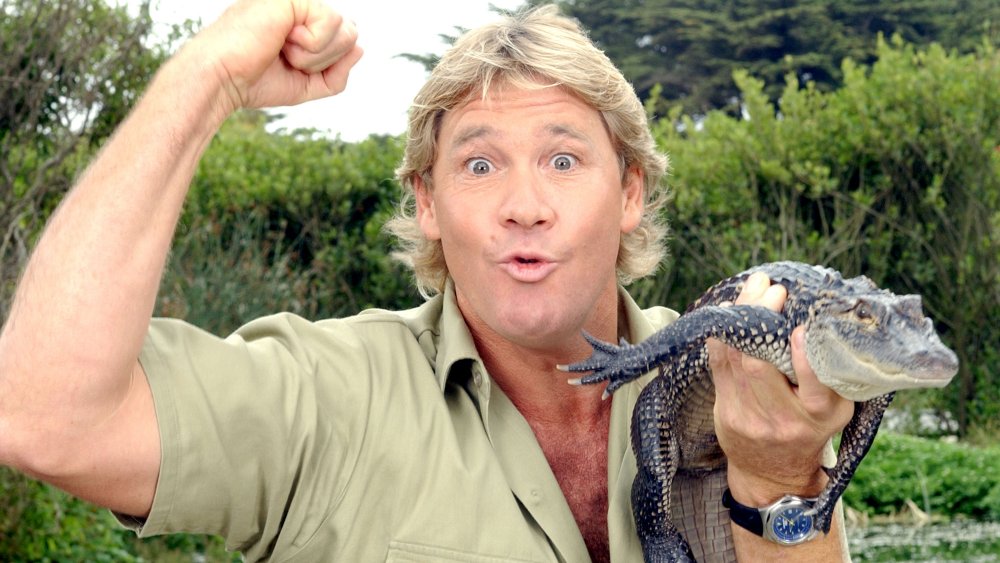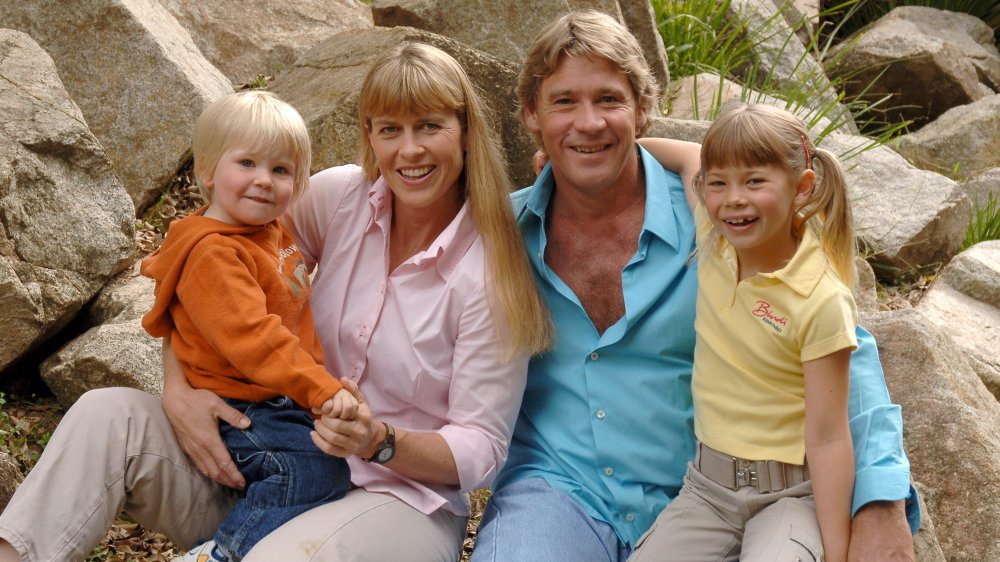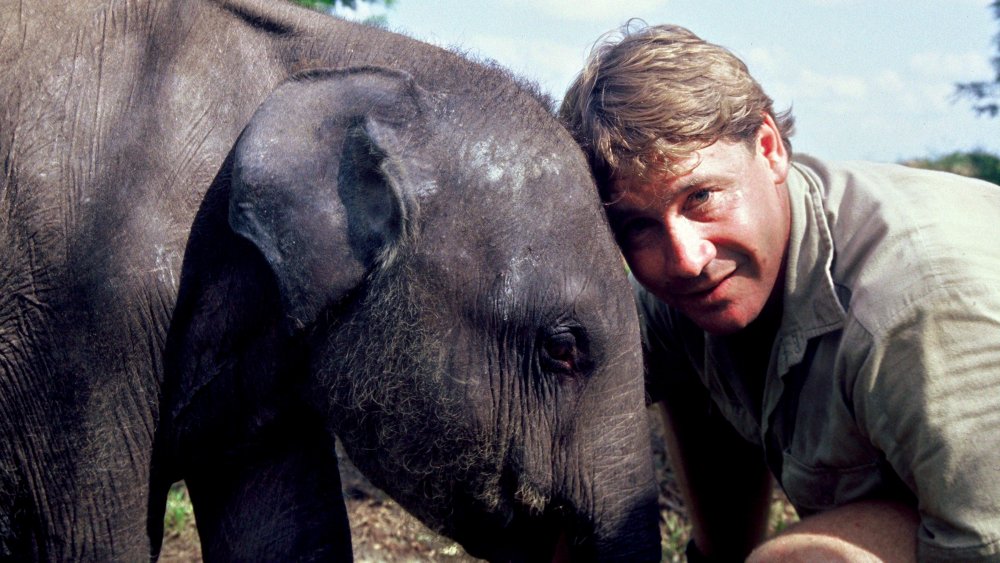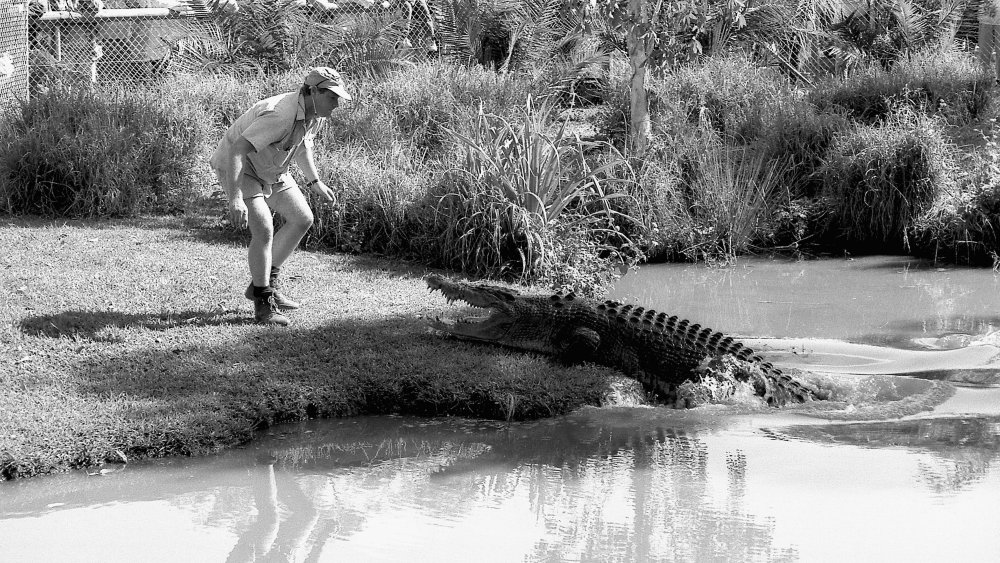Inside Steve Irwin's Plan To Save Endangered Animals
Steve Irwin is a prime example of how humans should appreciate the natural world and the animals within it. Granted, he might not be the best example of how to should interact with animals if you want to keep all of your limbs attached to their bodies — you're probably not going to wrestle a croc successfully and we don't condone you trying. Irwin's fearlessness wasn't for show or excitement. The "crocodile hunter" was busy trying to save endangered animals, and he and his wife, Terri Irwin, had a plan for how to do it.
At the time the Irwins put together their plan to save endangered animals from rapidly growing habitat destruction and over-hunting, they didn't believe the problem would end any time soon. It's a man-made problem caused by a mindset that will take a lot of time, dedication, and societal rebuilding to get under control. Despite all of that, the Irwins created a three-part plan to keep these animals safe until humans became more aware and more responsible regarding the natural world.
Educate children about the endangered animals
Steve and Terri Irwin explained their conservation plan to Scientific American in 2001, and it all starts with educating the young. The couple talks about a time they were helping build "things" and making contributions to the church in East Timor. While they were there, everyone was helping feed and clothe the children, but the Irwins say they helped fill a very important gap: education. Instead of giving the children "little teddy bears and cars," they handed out plastic snakes and "little squeaky crocodiles" so the children would begin to see these animals as fun things and not nuisances, as wild creatures are often perceived to be. "I think that it is a long process, but that it is a start," said Terri.
That was the entire point of Irwin's documentary series, The Crocodile Hunter, in the first place. While Irwin was out risking life and limb to put exotic and potentially dangerous critters in front of the camera, the show served as a way to educate children about endangered animals and spark a love for these creatures that would hopefully lead to their protection by future generations.
"In 30 years' time," the crocodile hunter told Scientific American, "those squeaky little crocodiles that we gave them are going to pay huge dividends."
Stuff those gorgeous creatures into a time-capsule
Part of Steve's plan to save endangered animals was to stuff them into a time-capsule — figuratively, of course. The phrasing, as he told Scientific American, refers to taking endangered animals and storing them away in zoos until the world is ready to treat them the way they ought to be treated — both creatures and their habitats protected.
The plan is meant to be a local approach, since local animal experts would likely be the most knowledgeable on the animals and their natural environments. During the animals' time in captivity, zoos would study them, learn how to breed them, and use them to educate the public. When the time is right, they'd then reintroduce the animals to the wild and let their populations flourish anew. According to Terri, this could take "10 years or 100 years or 300 years," depending on the species and how long it takes their human antagonists to change their way of thinking.
Why did the Irwins believe that zoos, many of which keep animals in captivity solely to bank a few bucks off family outings, should be the ones putting this plan into action? "Because that's what a zoo needs to be. We have to be educational facilities with the ability to put animals back in the wild when the critical stage is over," said Steve.
Protect habitats, and buy them if you have to
At Australia Zoo, the facility owned and operated by the Irwins, there are over 700 acres worth of wildlife habitat that serves as the home for over 1,000 animals. The zoo is a major conservation center in Australia, and because of that, the animals need to be housed in their proper homes. This is why, as Irwin says in his Wildest Animal Encounters collection (posted on YouTube), at Australia Zoo, they're "always endeavoring to house animals in environments that are exactly like their natural habitat."
Housing animals in appropriate habitats is only a small part of this plan. The other part requires them to actually conserve wild habitats for each animal they house. The Irwins actually bought land native to these critters. "Right now we've got Tasmanian devils," Terri told Scientific American. "We're looking at purchasing habitat in Tasmania to preserve these special creatures. It will continue like that wherever we can."
Steve Irwin's three-pronged approach might not be completely foolproof, but it provides a good framework for protecting animals from habitat destruction and over-hunting. As Terri said, "We no longer want to make the responsibility of the zoo as simply having the animals on display for your education and entertainment. It has to go far beyond that. What you see here is the tip of a very big iceberg."



